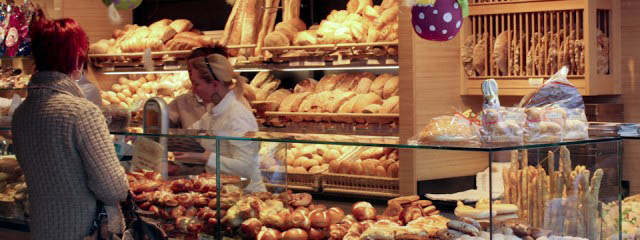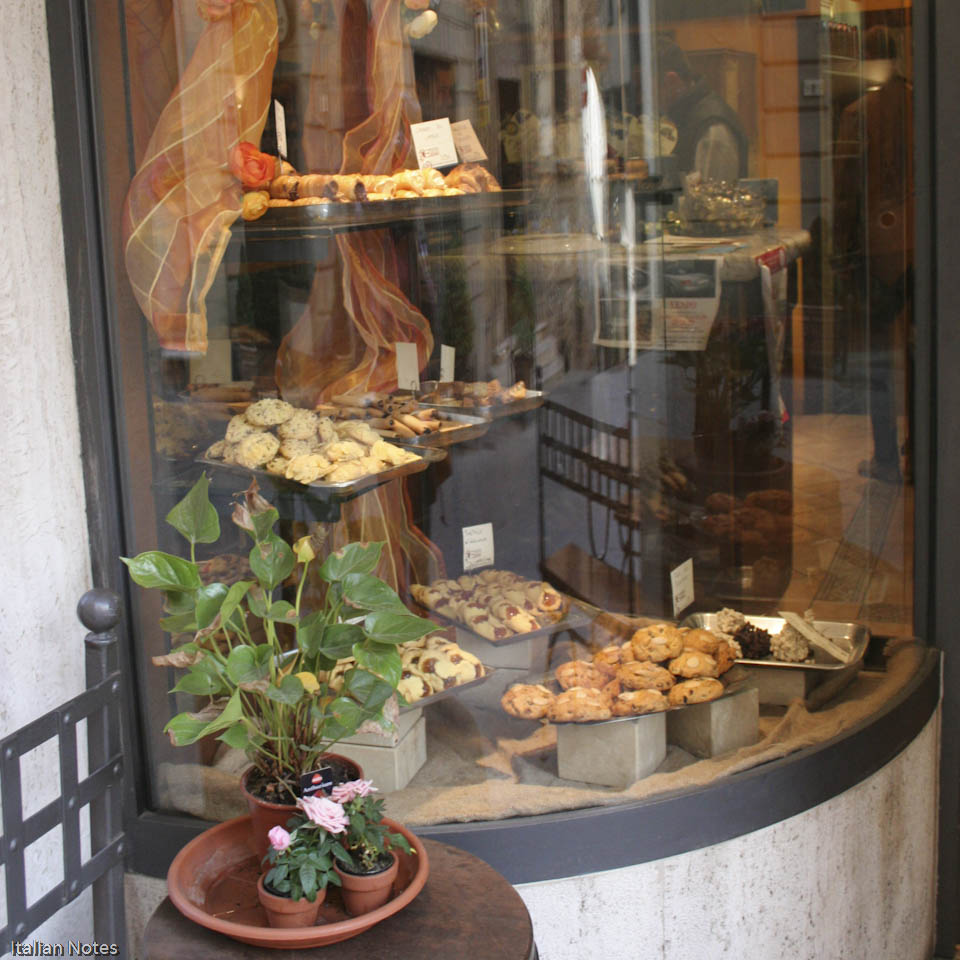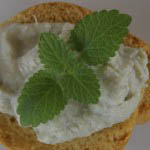Tuscany’s bread without salt
Even though salt tax has long been abolished and the salt supply lines reestablished, people in Umbria and Tuscany still prepare bread without salt.
Generally praised as a culinary stronghold, it is amazing to note that the people of central Italy don’t know how to bake bread. In my opinion, bread from most parts of Tuscany and Umbria is compact, dry, bland and devoid of character, and therefore local housewives tend to camouflage the bread as crostini, bruschetta, panzanella or minestra and other courses that conceal the tastelessness.
In addition or perhaps as a consequence, bakeries in Tuscany and Umbria are hard to find, and when you finally spot a ‘panettiere’, they are either closed (due to the weather, the time of day, the time of week or the time of year) or out of bread. All you can hope to find when the shops reopen in the afternoon is a pound of baked flour so hard that it could be used in self defense as an instant knock out for approaching muggers. The taste is non-existent.
Of course the tasteless Umbrian and Tuscan bread has a perfectly sensible explanation.
The Salt Tax
In the early Middle Ages, the rulers of Pisa cut off salt supplies lines from the coast in retaliation of a fall out with their rival in Florence. This made salt so costly that common husbandry forced people in central Tuscany to prepare bread without the addition of salt, and the inhabitants of Umbria had a similar experience.
In 1540, the slightly corrupt Pope Paul III imposed an indirect tax on salt, which immediately changed the culinary habits. The Pope forced the citizens of Perugia to purchase salt from the pontificates, and this in reality doubled the price, and caused major headaches as salt was a most effective means for the preservation of food. In response the people of Perugia sought to limit consumption and stopped adding salt to bread, and some of them are still willing to swear that ‘filone’ tastes better that way.

There’s a large selection of different kinds of bread on sale from most bakeries in Italy.
How to Serve Unsalted Bread
So even though salt tax has long been abolished and the salt supply lines to central Tuscany reestablished, the consequences live on. Instead of preparing bread with salt, people of central Italy prefer to bury their bread in heaps of tomatoes, onions, basil and olive oil. They drown it in a ribollita with cabbage, leeks, onions, potatoes and beans. Or dissolve it in olive oil and balsamic vinegar before tossing in tomatoes, cucumbers and celery for a bread salad.
That way, stale Tuscan and Umbrian bread gives us a taste of history and becomes edible for outsiders without a share in the medieval salt wars.
Bread without salt and other notes on Tuscany
Leave a Reply
Want to join the discussion?Feel free to contribute!
Leave a Reply Cancel reply
This site uses Akismet to reduce spam. Learn how your comment data is processed.




Wow! Who knew? One of my dreams is to spend at 3 months exploring Italy and learning to cook authentic Italian – but bread without salt?! Yuck!
Not exactly to my taste either, but you can get used to everything I believe.
Loved Tuscany, hated the bread!
That makes two of us;)
Very interesting – didn’t know that. Oh well, luckily for everyone they make up for that awful bread with other super delicious local dishes… and the bruschetta is always tasty!
You have certainly got a point:)
Just got back from Tuscany .,loved there. Bread,will try making my own
I’m not too partial to bread without salt myself, but I’m sure it can easily be made at home
Having spent two weeks in Tuscany a few years ago I couldn’t understand the tasteless, hard bread considering everything else was so good, including wonderful beef, wine and Italian beer. Now I get it!
It took me a while as well, but I suppose saltless bread is an acquired taste, as the locals feel very passionate about it.
Oh come on! That’s a bit rough.
My wife and I are from Orvieto originally, though I grew up in Australia, and we have to fill the car with the local bread every time we visit because we can’t get it as good in Ancona.
Our local baker in Monterubiaglio makes an awesome “filone” with a crunchy crust and soft nutty centre. And in my opinion it is the fact that it is unsalted that lends it so well to “scarpetta”, crostini, panzanella and all the other ways Tuscans and Umbrians dress up their bread.
Try a nice mortadella or prosciutto semi dolce di Norcia on unsalted bread and tell me it’s no good! I dare you.
If the Tuscans and Umbrians didn’t like unsalted bread I’m sure they would have reverted back to salting their doughs when the Papal States bit the dust. Didn’t happen though, did it?
Buy your unsalted bread daily and enjoy it fresh with properly seasoned food and you’ll learn to love it. :)
I’m sure you are right Marcello, and I didn’t mean taunt central Italian baking traditions, but for an outsider the taste is strange and unusual. I look forward to spending more time in Umbria and Tuscany and discover your appreciation of unsalted bread:D
!!! I just got back from studying in Orvieto and loved it! It’s such a beautiful little city. One of the things I miss the most, actually, is bruschetta! Just the plain kind with salt and olive oil. I’ve been trying to make it here at home but all the bread is salted, gosh darn it! That’s why I clicked on this link. I’m trying to find a recipe for unsalted bread that I can make. Sure, I didn’t appreciate the unsalted bread in Italy at first, but then I started to like it once I discovered the glory of bruschetta and scarpetta. Those two just aren’t the same with salted bread. Now, unsalted bread is one of the things I miss the most, probably because it’s so hard to find in the States. Anyways, thanks for your comment, Marcello. :)
Well, you have to start baking. It shouldn’t be too hard to find a recipe and leave out the salt:)
I used to take a tiny pot of sea salt out to Italy to sprinkle on the bread in restaurants , sneaky style so as to not offend the waiting staff. I have given up bread these days but had a smile at the memory.
This is hilarious, and just what I’ve always wanted to do in places with unsalted bread:)